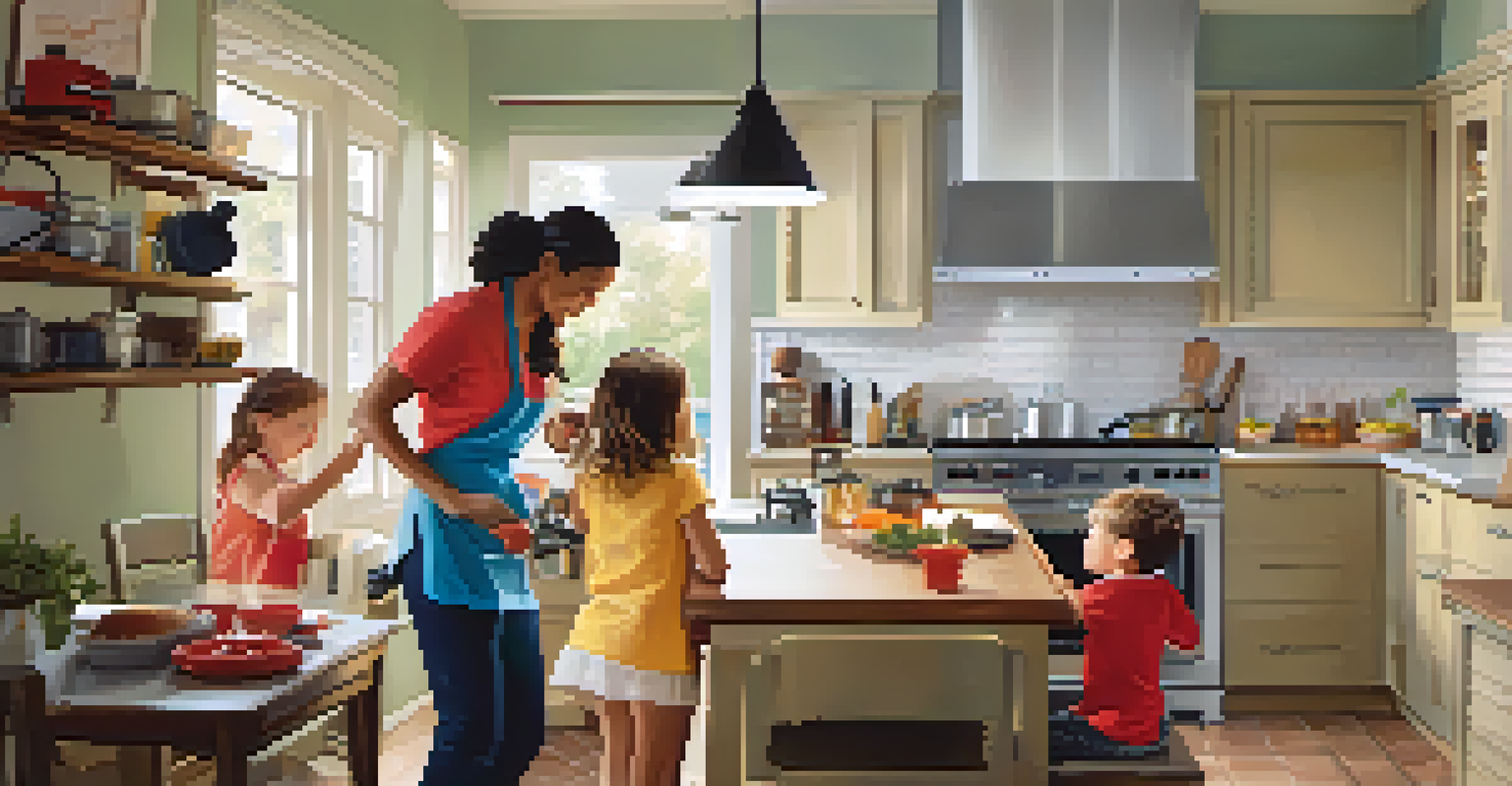Fire Safety: Essential Upgrades Every Home Needs

Why Fire Safety Should Be a Top Priority for Homeowners
Fire safety is a vital concern for any homeowner. Every year, countless families face the devastating impact of house fires, which can lead to loss of property and, tragically, lives. Understanding the risks and making proactive upgrades can significantly reduce the chances of a fire occurring in your home.
Fire safety is not a one-time task; it requires continuous effort.
By prioritizing fire safety, you're not just protecting your property; you're safeguarding your loved ones. It’s about creating a secure environment where everyone can feel safe. From electrical hazards to kitchen fires, knowing what to look for can make all the difference.
Moreover, many insurance companies offer discounts for homes with updated fire safety features. This not only helps you save money but also gives you peace of mind knowing that you’ve taken steps to mitigate risks.
Install Smoke Detectors in Every Room for Early Warning
One of the simplest yet most effective upgrades is installing smoke detectors in every room. These devices are your first line of defense, alerting you to smoke long before a fire becomes uncontrollable. Ideally, you should place them on every floor and in areas where fires are more likely to start, such as kitchens or near bedrooms.

It's essential to test your smoke detectors monthly and change the batteries at least once a year. Many homeowners forget this simple task, which can render these life-saving devices useless. A good rule of thumb is to change batteries when you change your clocks for daylight saving time.
Install Smoke Detectors Everywhere
Having smoke detectors in every room significantly increases early warning and safety during a fire.
Additionally, consider investing in interconnected smoke detectors that can communicate with each other. This means if one alarm goes off, all alarms will sound, giving you and your family a better chance to escape in case of an emergency.
Upgrade to Fire-Resistant Materials in Your Home
Using fire-resistant materials is a smart way to enhance your home’s safety. Materials like stucco, brick, or concrete can help prevent flames from spreading. When building or renovating, consider these materials for roofs, siding, and decks.
An ounce of prevention is worth a pound of cure.
Moreover, don’t forget about the interior of your home. Fire-retardant paints and treated fabrics can offer added protection. This is especially important in high-risk areas like the kitchen, where flames are likely to ignite.
Incorporating fire-resistant landscaping, such as using gravel or rock instead of mulch, can also prevent fires from reaching your home. By making these thoughtful choices, you create a buffer that helps keep your family safe.
Create an Emergency Escape Plan with Your Family
An emergency escape plan is crucial for every household. Sitting down with your family to discuss potential escape routes and safe meeting spots can save lives during a fire. Make sure everyone knows multiple ways to exit each room.
Practice your escape plan regularly so that it becomes second nature. Treat these drills like fire drills at school; practice helps reduce panic in real situations. A calm and coordinated response can make a huge difference in an emergency.
Create an Emergency Escape Plan
Developing and practicing an escape plan with your family can save lives in a fire emergency.
Lastly, ensure that everyone knows how to call for help. Keep emergency numbers easily accessible, and consider having a designated family member responsible for alerting the authorities in case of a fire.
Invest in Fire Extinguishers for Quick Response
Having fire extinguishers readily available is another essential upgrade. They can help you tackle small fires before they escalate. Aim to place extinguishers in key areas like the kitchen, garage, and near any heating appliances.
It’s important to choose the right type of fire extinguisher for different kinds of fires. For instance, a Class K extinguisher is ideal for cooking fires, while a Class A extinguisher works well on ordinary combustibles like wood or paper. Familiarize yourself with how to use them effectively.
Regularly check your extinguishers to ensure they’re charged and within expiration dates. A fire extinguisher that is out of service is as good as having none at all.
Maintain Electrical Systems to Prevent Fires
Electrical fires are one of the leading causes of home fires, making maintenance essential. Regularly inspect your wiring, outlets, and appliances for any signs of wear or damage. If you notice flickering lights or outlets that feel warm to the touch, it's time to call a professional.
Avoid overloading outlets and be cautious with extension cords. While they may seem convenient, overuse can lead to overheating and fires. Instead, invest in additional outlets or power strips with surge protectors to accommodate your devices safely.
Regularly Review Fire Safety Measures
Consistently reviewing and updating your fire safety measures ensures ongoing protection for your home.
Moreover, consider having a licensed electrician perform a home safety inspection. They can identify potential hazards and recommend upgrades to keep your electrical systems in tip-top shape.
Practice Kitchen Safety to Reduce Fire Risks
The kitchen is often referred to as the heart of the home, but it’s also a hotspot for fire hazards. To reduce risks, never leave cooking unattended; most kitchen fires start when food is left on the stove. Set timers to help you remember when to check on meals.
Keep flammable items like dish towels and oven mitts away from cooking areas. A simple moment of carelessness can ignite a fire that spreads quickly. Additionally, keep a lid nearby to smother small grease fires safely.

Finally, educating your family about safe cooking practices is vital. Teach children the importance of kitchen safety and establish rules to keep them out of harm's way while cooking.
Regularly Review and Update Your Fire Safety Measures
Fire safety is not a one-time task; it requires continuous effort. Regularly reviewing your fire safety measures ensures that your home remains protected. Schedule annual checks on your smoke detectors, fire extinguishers, and escape plans.
Stay informed about new fire safety technologies and practices. For example, smart smoke detectors with smartphone alerts can provide added convenience and peace of mind. Embracing technology can enhance your home’s fire safety significantly.
Lastly, involve your family in these reviews. Discuss any potential changes or upgrades and make fire safety a collective responsibility. This not only raises awareness but also empowers everyone to contribute to a safer home.